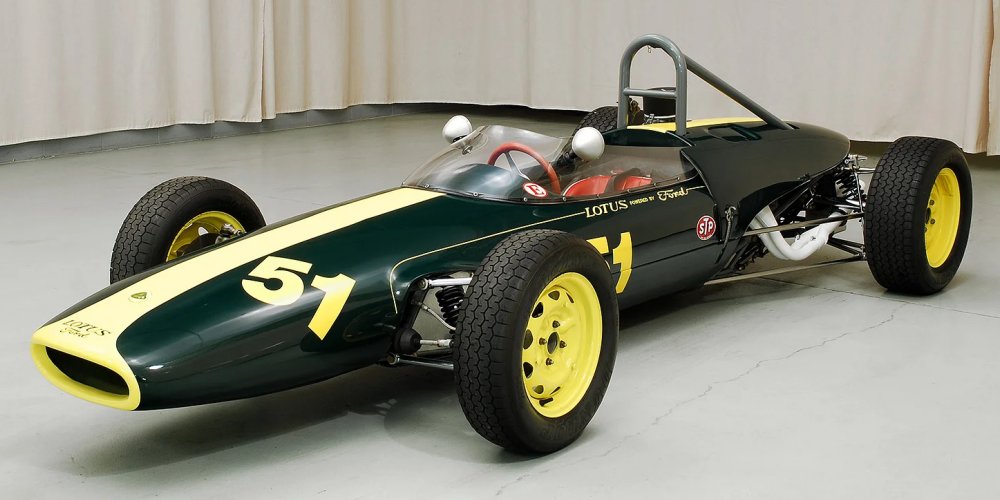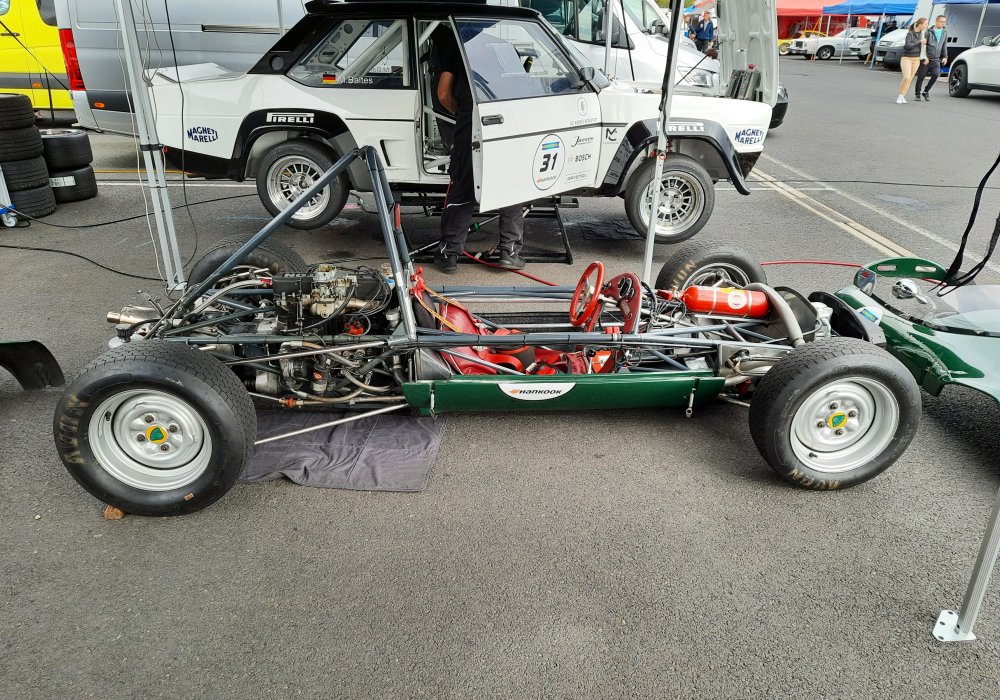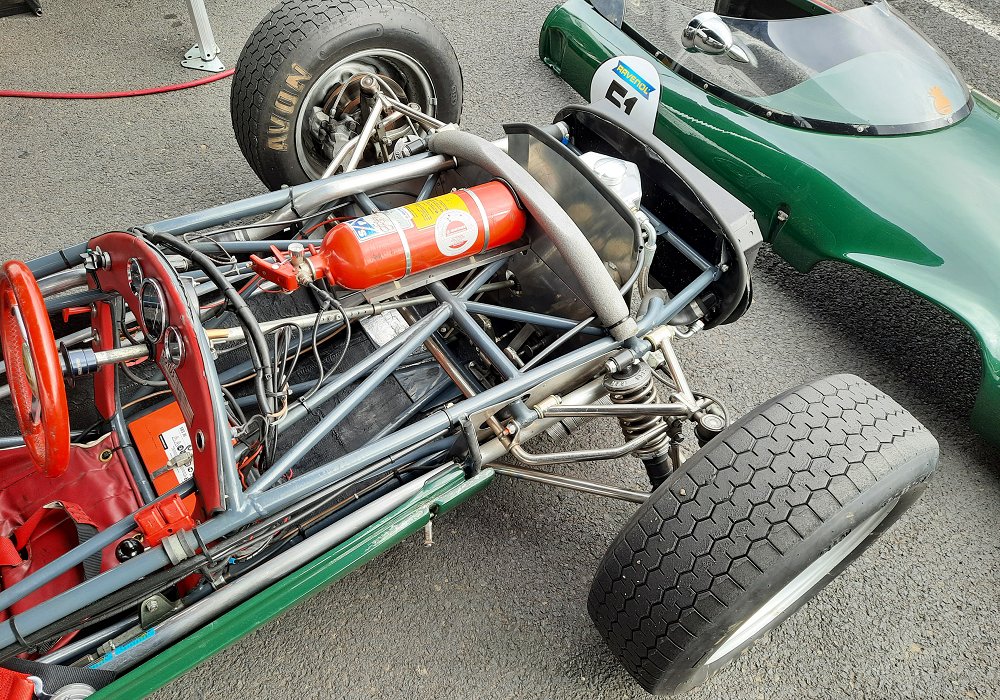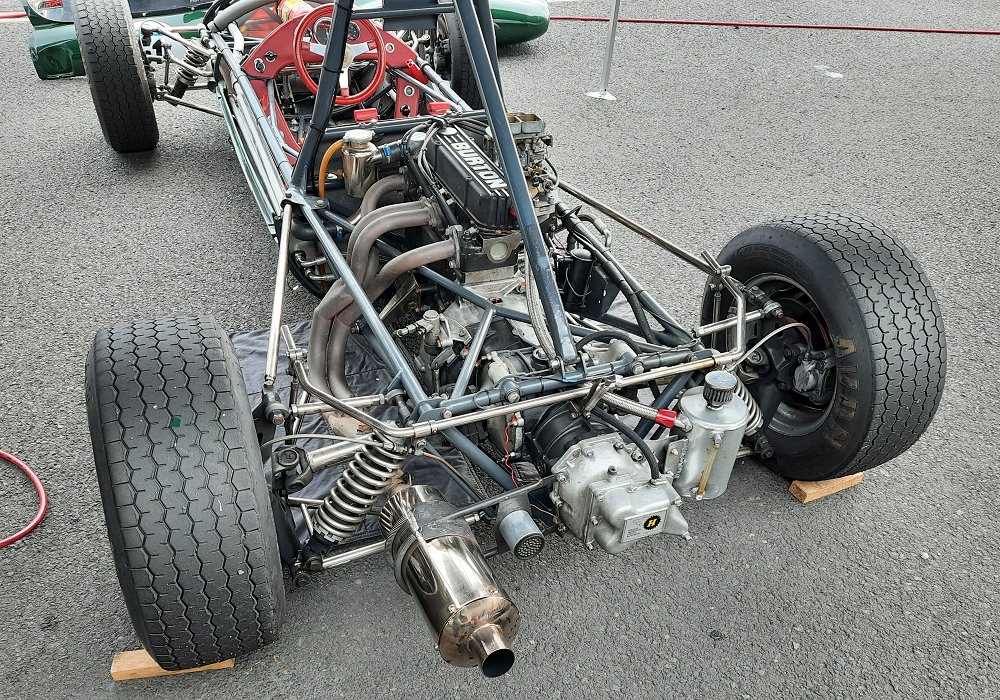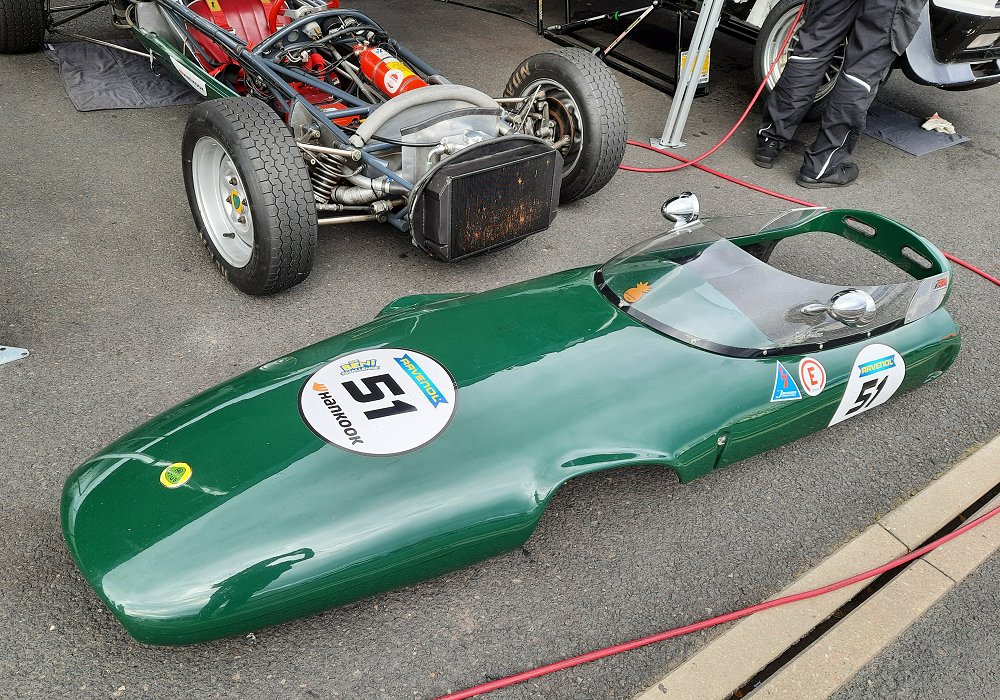Description
The Lotus 51 was introduced in 1967 as Lotus’s first dedicated Formula Ford car and quickly became one of the defining machines of the category. It arrived at a pivotal moment: Formula Ford had just been created in Britain as a cost-effective, teaching-oriented single-seater class, designed to give young drivers a realistic training ground using production-based engines and simple, durable chassis. The Lotus 51 was Colin Chapman’s answer to this new formula — a lightweight, beautifully balanced race car that offered the precision and feel of a true single-seater without the cost and complexity of Formula 3 or Formula Junior machinery.
The 51 was developed directly from the Lotus 31 Formula 3 chassis, sharing its basic architecture but modified to suit the new Ford Kent engine and Formula Ford regulations. It used a welded tubular steel spaceframe — simple, stiff, and easy to repair — constructed according to Chapman’s usual principles of minimum weight and maximum efficiency. This chassis design was well-proven, and its predictability, rigidity, and excellent feedback made the 51 exceptionally suitable for teaching racecraft. The driving position was reclined and centrally located, giving novices a taste of proper single-seater ergonomics while keeping the car compact and aerodynamically clean.
Power came from the Ford 1600 Kent “crossflow” engine, tuned only lightly to comply with Formula Ford rules. Producing around 105 horsepower at 6,000 rpm, the engine was remarkably strong and reliable, exactly what the new formula required. It was paired with a straightforward four-speed Hewland Mk5 or Mk6 gearbox, sending power to the rear wheels. Weighing roughly 400 kilograms, the Lotus 51 had an excellent power-to-weight ratio for a training category, delivering lively acceleration and a top speed of around 125 mph depending on gearing.
Suspension followed classic Lotus thinking. At the front were double wishbones with coil springs and telescopic dampers. At the rear, lower wishbones, twin radius arms, and outboard coil-over dampers provided progressive handling and predictable breakaway characteristics. The 51’s suspension geometry was carefully set up to encourage stability and forgiveness, allowing inexperienced drivers to learn how the car behaved at the limit without being punished by sudden oversteer. Braking was by Girling discs at the front and drums or discs at the rear depending on the exact specification. Steering was unassisted and exceptionally communicative — a Lotus hallmark that helped teach students finesse and accuracy.
The car was offered in two main variants: the Lotus 51A and the 51C. The “A” was the original specification, while the “C” incorporated detail improvements such as reinforced chassis points, revised suspension pickup locations, and minor bodywork changes. Both versions featured glassfibre body panels that were light, simple to replace, and aerodynamically tidy. The compact nosecone, low cockpit sides, and slim engine cover kept drag to a minimum, and the overall shape was pure mid-1960s single-seater — elegant, narrow, and clean.
On the track, the Lotus 51 proved immediately competitive. Its combination of mechanical grip, balanced handling, and light weight made it one of the strongest cars in early Formula Ford, often dominating grids in the UK and later the United States. Schools such as the Jim Russell Racing School and the Brands Hatch Racing School used the model extensively for driver training, helping launch the careers of many drivers who would go on to Formula 3, Formula 2, and ultimately Formula One.
The 51’s reliability and low operating cost made it popular with privateers as well. It was straightforward to service, parts were inexpensive, and the spaceframe chassis could withstand minor accidents without major repairs. Drivers learned heel-and-toe techniques, slip-angle control, and race-craft in a machine that rewarded precision and punished brute-force inputs — exactly the qualities a training car needed.
Although the Lotus 51 was replaced in 1969 by the more angular and modern-looking Lotus 61, it left a lasting legacy. Around 218 chassis were built, making it one of the most numerous Lotus single-seaters of the era. Many continue to race in historic Formula Ford championships today, valued for their purity, feedback, and classic late-1960s styling.
The Lotus 51 A/C stands as an important milestone in Lotus history. It introduced the company to Formula Ford, helped define the DNA of the category, and trained an entire generation of drivers in the fundamentals of single-seater racing. Light, responsive, affordable, and beautifully balanced, it remains one of the most admired entry-level race cars ever built — a timeless expression of Chapman’s belief that a racing car should be as simple and as light as possible, and that true performance comes from intelligence rather than excess.
